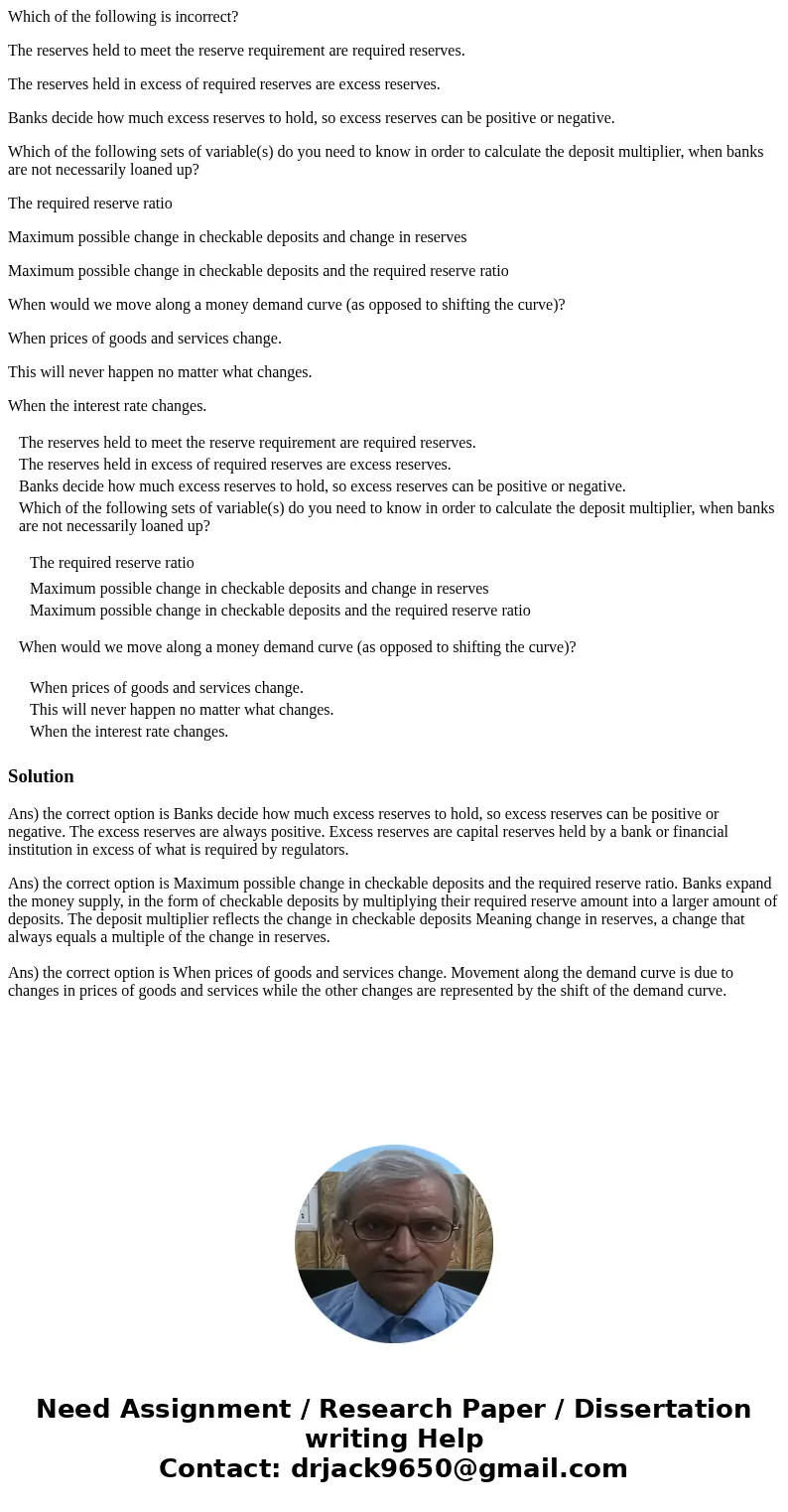Which of the following is incorrect The reserves held to mee
Which of the following is incorrect?
The reserves held to meet the reserve requirement are required reserves.
The reserves held in excess of required reserves are excess reserves.
Banks decide how much excess reserves to hold, so excess reserves can be positive or negative.
Which of the following sets of variable(s) do you need to know in order to calculate the deposit multiplier, when banks are not necessarily loaned up?
The required reserve ratio
Maximum possible change in checkable deposits and change in reserves
Maximum possible change in checkable deposits and the required reserve ratio
When would we move along a money demand curve (as opposed to shifting the curve)?
When prices of goods and services change.
This will never happen no matter what changes.
When the interest rate changes.
| The reserves held to meet the reserve requirement are required reserves. | ||||||||||||||||||||||||||
| The reserves held in excess of required reserves are excess reserves. | ||||||||||||||||||||||||||
| Banks decide how much excess reserves to hold, so excess reserves can be positive or negative. | ||||||||||||||||||||||||||
| Which of the following sets of variable(s) do you need to know in order to calculate the deposit multiplier, when banks are not necessarily loaned up?
When would we move along a money demand curve (as opposed to shifting the curve)?
|
Solution
Ans) the correct option is Banks decide how much excess reserves to hold, so excess reserves can be positive or negative. The excess reserves are always positive. Excess reserves are capital reserves held by a bank or financial institution in excess of what is required by regulators.
Ans) the correct option is Maximum possible change in checkable deposits and the required reserve ratio. Banks expand the money supply, in the form of checkable deposits by multiplying their required reserve amount into a larger amount of deposits. The deposit multiplier reflects the change in checkable deposits Meaning change in reserves, a change that always equals a multiple of the change in reserves.
Ans) the correct option is When prices of goods and services change. Movement along the demand curve is due to changes in prices of goods and services while the other changes are represented by the shift of the demand curve.

 Homework Sourse
Homework Sourse